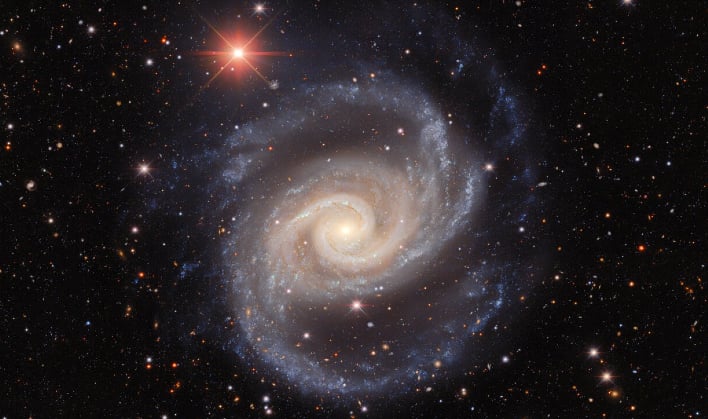Breathtaking Photo Shows Swirling Stars In Spanish Dancer Galaxy 70M Light Years Away

Scientists and astronomers are eagerly awaiting the first images from NASA's James Webb Space Telescope (JWST). The telescope is expected to deliver imagery from deep space that will hopefully give further insight to the looming questions surrounding the beginning of time and space. But until then, there are plenty of other telescopes, both space and earth bound, to gather images and data from. One of those is the US Department of Energy-fabricated Dark Energy Camera located at Cerro Tololo Inter-American Observatory, in Chile.
An image captured by the Dark Energy Camera showcases the galaxy NGC 1566, better known as the Spanish Dancer, as it twirls its arms in the expanse of deep space. The galaxy lies in the constellation Dorado approximately 70 million light years from Earth. Because the galaxy has a face-on view to Earth, its location, and its composition make it a true treasure trove of opportunities for astronomers across many fields.
Another aspect of NGC 1566, is that it is home to stars at all stages of stellar evolution. Young, brightly burning stars outline the arms of the galaxy, while dark spots within those arms are dust lanes. The twirling arms are rich in gas, and provide the perfect environment for new stars to form. The more reddish colors toward the center of the galaxy are cooler, older stars and dust. The Spanish Dancer has even hosted an observed end-of-life event, when a supernova called SN2010el took center stage in 2010.
The Spanish Dancer is the most luminous member of a collection of galaxies known as the Dorado Group. Galaxy groups are collections of less than 50 galaxies that are loosely held together by the gravitational pull that each applies to the others. NGC 1566 itself is so commanding that it has its own group, the NGC 1566 Group.
As NGC 1566 continues to provide insight to astronomers, they will surely be using JWST once it is capable of taking and sending pictures back to Earth. JWST will observe the galaxy in infrared light by Gemini Observatory's Chief Scientist, NOIRLab astronomer Janice Lee, as part of the PHANGS project. This project will take advantage of the fact that JWST can see through gas and dust in order to investigate stars in their earliest stages of formation.

